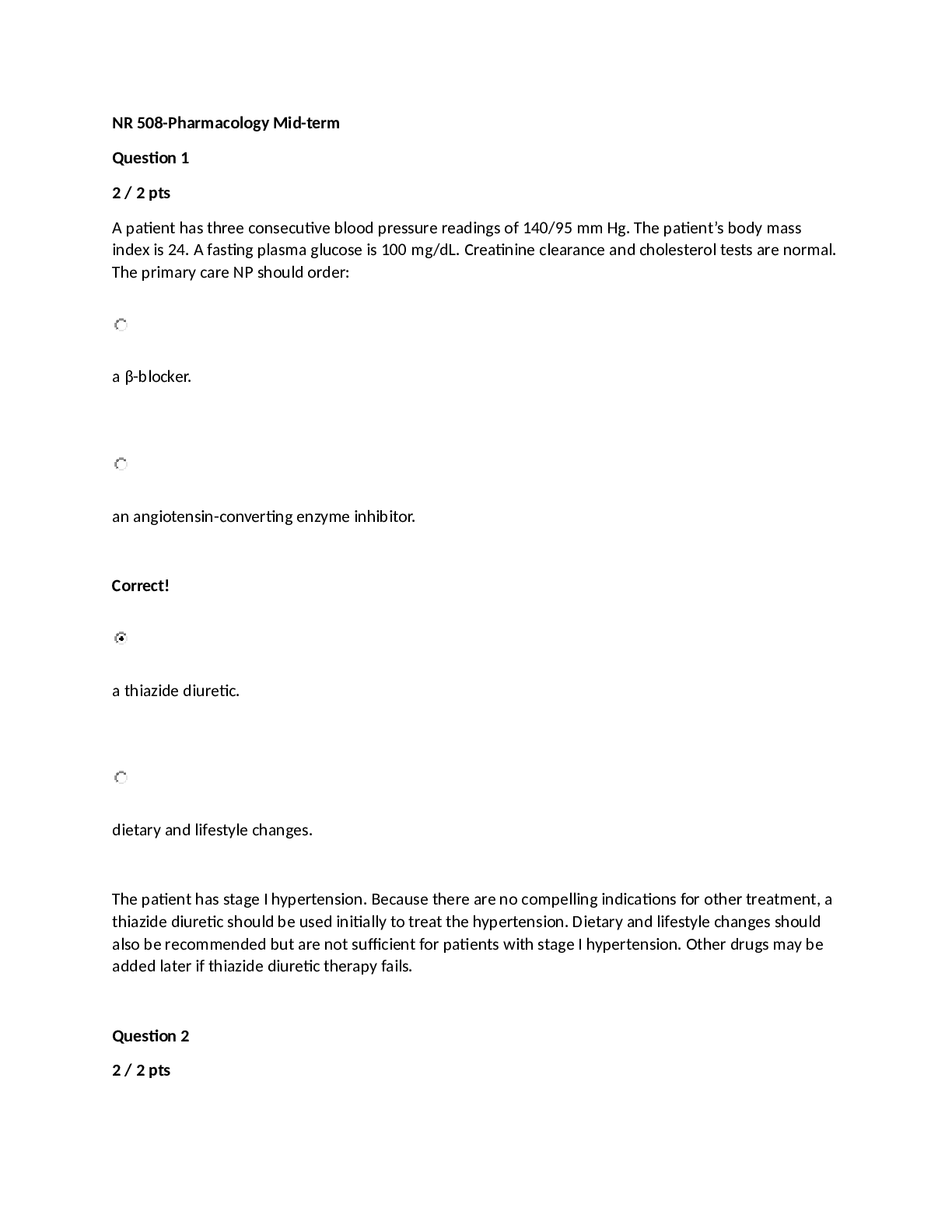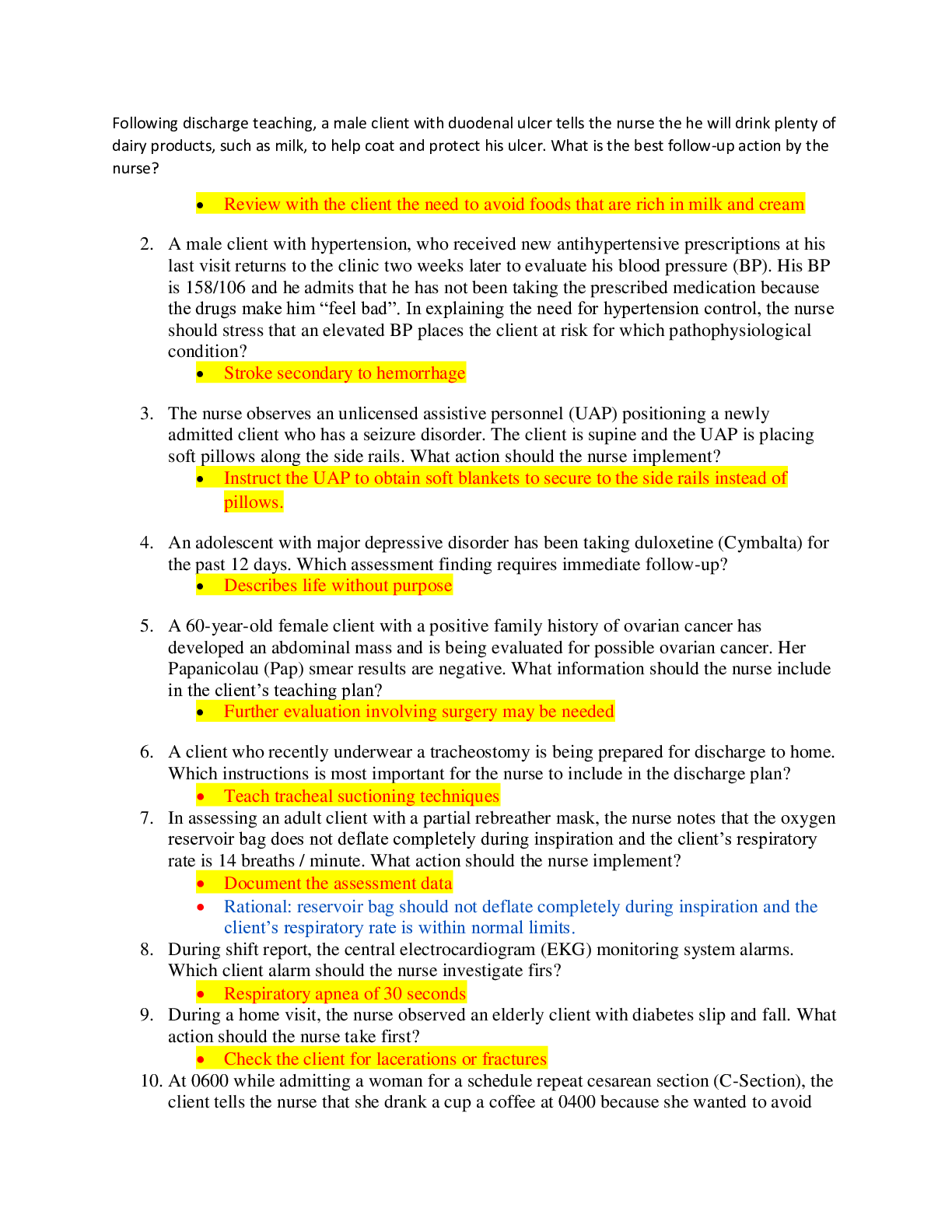*NURSING > EXAM > NUR 4120 Cardiovascular Exam 1.Assessment of cardiovascular function(2020/2021) Complete Solutions. (All)
NUR 4120 Cardiovascular Exam 1.Assessment of cardiovascular function(2020/2021) Complete Solutions.
Document Content and Description Below
Assessment of cardiovascular function Cardiovascular Medication Metoprolol Warfarin - Coumudin Diltiazem Furosemide – Lasix Overview of Anatomy and Physiology Three layers... o Endocardium o Myocardium – muscle contraction and pump o Epicardium Four chambers – know what is happening with s1 and s2 Heart valves o Know where the valves are and what they do o Atrioventricular valves o Semilunar valves Vasculature Structure of the Heart: Coronary Circulation Cardiac Conduction System Terms - Cardiac Action Potential Depolarization: electrical activation of cell caused by influx of sodium into cell while potassium exits cell Repolarization: return of cell to resting state caused by re-entry of potassium into cell while sodium exits Refractory periods o Effective refractory period: phase in which cells are incapable of depolarizing o Relative refractory period: phase in which cells require stronger-than-normal stimulus to depolarize Cardiac Action Potential Need to Know: location of the vessels Blood flow Know your right from left side SA node starts the HB 60-100 beats AV nodes start at a later beat First beat should not start here Focus on repolarization and depolarization EKG strips Electrolytes Phase 0 = Na comes into the actual cell (RAPID depolarization, SODIUM IN) Phase 1 = early cell repolarization – K+ coming out of the cell (POTASSIUM OUT) Phase 2 = plateau phase (rate of repolarization slows); Ca+ ENTER CELL Phase 3 = complete repolarization (return of cell to resting state) Phase 4 = resting phase before the next depolarization Great Vessel and Heart Chamber Pressures Cardiac Hemodynamics Hemodynamics Terms - Cardiac Output Stroke volume: amount of blood ejected with each heartbeat Cardiac output: amount of blood pumped by ventricle in liters per minute Preload: degree of stretch of cardiac muscle fibers at end of diastole o Affected by volume, diarrhea, dehydration, vomiting Contractility: ability of cardiac muscle to shorten in response to electrical impulse Afterload: resistance to ejection of blood from ventricle Ejection fraction: percent of end diastolic volume ejected with each heart beat o 55-60 normal o <40 lead to HF!! [Show More]
Last updated: 2 years ago
Preview 1 out of 23 pages

Buy this document to get the full access instantly
Instant Download Access after purchase
Buy NowInstant download
We Accept:

Reviews( 2 )

by ferrelll2003 · 2 years ago
Glad it is, thanks. by Academia1434. 2 years ago

by Academia1434 · 2 years ago
$13.50
Can't find what you want? Try our AI powered Search
Document information
Connected school, study & course
About the document
Uploaded On
Feb 24, 2021
Number of pages
23
Written in
Additional information
This document has been written for:
Uploaded
Feb 24, 2021
Downloads
1
Views
118











; Answered.png)


